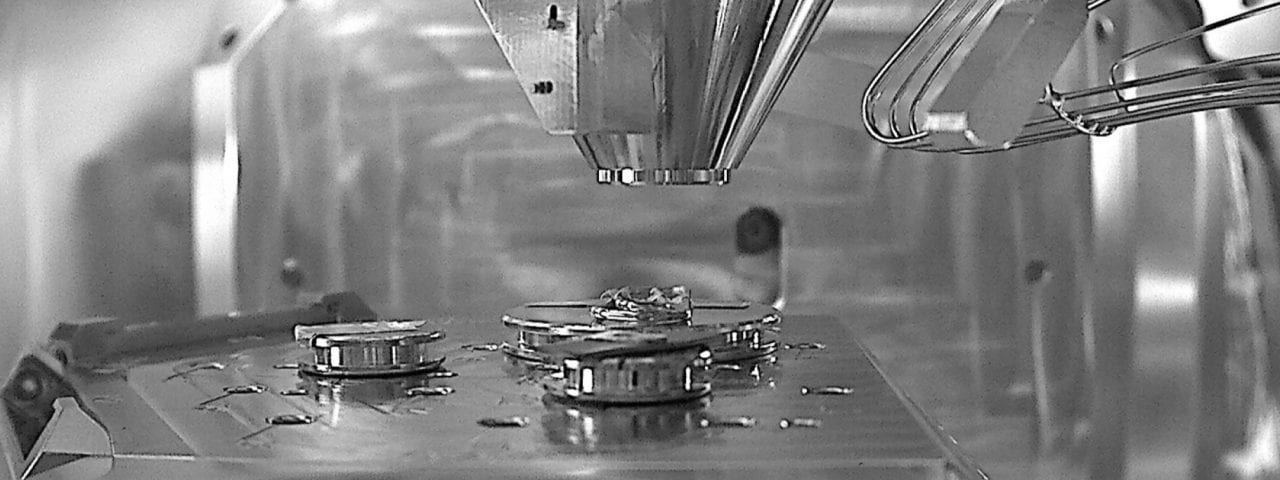Equipment
The list of the most important equipment we use in our research:
FinEstBEAMs beamline at MAX IV synchrotron
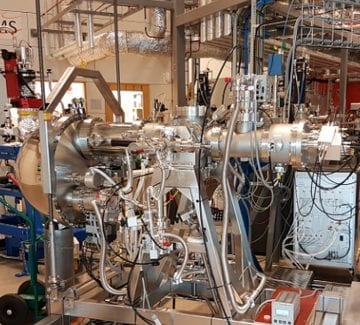 FinEstBeAMS is a materials and atmospheric science beamline at the MAX IV 1.5 GeV storage ring in Lund, Sweden. It provides ultraviolet and soft x-ray radiation for ultra-high vacuum studies of surfaces and interfaces and for gas-phase experiments and photoluminescence in solids.
FinEstBeAMS is a materials and atmospheric science beamline at the MAX IV 1.5 GeV storage ring in Lund, Sweden. It provides ultraviolet and soft x-ray radiation for ultra-high vacuum studies of surfaces and interfaces and for gas-phase experiments and photoluminescence in solids.
Scanning Electron Microscope, SEM
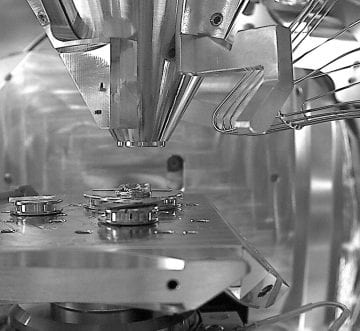 Thermo Scientific Apreo scanning electron microscope for materials science. This SEM can be used for high-resolution imaging and to obtain compositional and elemental information of the surface or near-surface region of different samples. It is useful for materials science and for industrial manufacturing and can be used to image materials ranging e.g. from nano- and microparticles, catalysts, and nanodevices to bulk magnetic samples and insulators such as polymers. This SEM has broad analytical extensions: STEM (Scanning Transmission Electron Microscopy), CL (Cathodoluminescence) and EDS (Energy-dispersive X-ray Spectroscopy).
Thermo Scientific Apreo scanning electron microscope for materials science. This SEM can be used for high-resolution imaging and to obtain compositional and elemental information of the surface or near-surface region of different samples. It is useful for materials science and for industrial manufacturing and can be used to image materials ranging e.g. from nano- and microparticles, catalysts, and nanodevices to bulk magnetic samples and insulators such as polymers. This SEM has broad analytical extensions: STEM (Scanning Transmission Electron Microscopy), CL (Cathodoluminescence) and EDS (Energy-dispersive X-ray Spectroscopy).
X-Ray Photoelectron Spectrometer, XPS
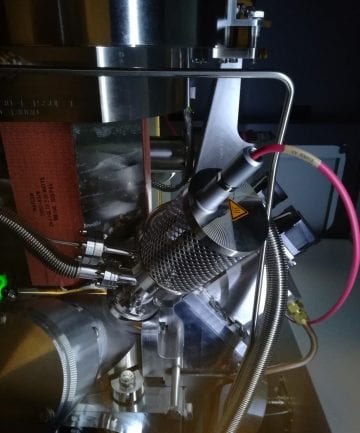 XPS is used for surface chemical analysis of samples. Thermo Scientific Nexsa X-Ray Photoelectron Spectrometer (XPS) System that is integrated with ISS (Ion Scattering Spectroscopy), REELS (Reflected Electron Energy Loss Spectroscopy) and allows users to conduct true correlative analysis. High resolution, possibility to analyze larger areas by scanning, sensitive depth profiling and possibility to measure also insulators make it valuable for materials research. It is a perfect analysis tool for microelectronics, ultra-thin films, nanotechnology development and many other applications and thus has potential for a very diverse group of users.
XPS is used for surface chemical analysis of samples. Thermo Scientific Nexsa X-Ray Photoelectron Spectrometer (XPS) System that is integrated with ISS (Ion Scattering Spectroscopy), REELS (Reflected Electron Energy Loss Spectroscopy) and allows users to conduct true correlative analysis. High resolution, possibility to analyze larger areas by scanning, sensitive depth profiling and possibility to measure also insulators make it valuable for materials research. It is a perfect analysis tool for microelectronics, ultra-thin films, nanotechnology development and many other applications and thus has potential for a very diverse group of users.
Ion Time-of-Flight Spectrometer, Ion-TOF
We have a home-made Wiley-McLaren type ion time-of-flight spectrometer. Time-of-flight mass spectrometry (TOFMS) is a method of mass spectrometry in which an ion’s mass-to-charge ratio is determined via a time of flight measurement. From this ratio and known experimental parameters, one can identify the ion.
Gas-phase electron and electron-ion coincidence spectrometer, PEPICO
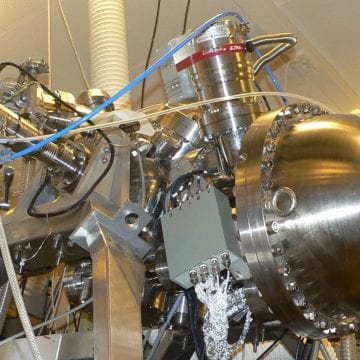 Home-made gas-phase electron and electron-ion coincidence spectrometer (PEPICO) is used to study photo-fragmentation processes. In the system the ion mass spectrometer is combined with the photoelectron spectrometer. When radiation interacts with a target sample in the gas phase, electrons and ions departed from the target sample are measured in coincidence by using a hemispherical electron analyzer and an ion time-of-flight mass spectrometer. This information gives a good picture of photo-fragmentation processes in most cases.
Home-made gas-phase electron and electron-ion coincidence spectrometer (PEPICO) is used to study photo-fragmentation processes. In the system the ion mass spectrometer is combined with the photoelectron spectrometer. When radiation interacts with a target sample in the gas phase, electrons and ions departed from the target sample are measured in coincidence by using a hemispherical electron analyzer and an ion time-of-flight mass spectrometer. This information gives a good picture of photo-fragmentation processes in most cases.
Hardness tester
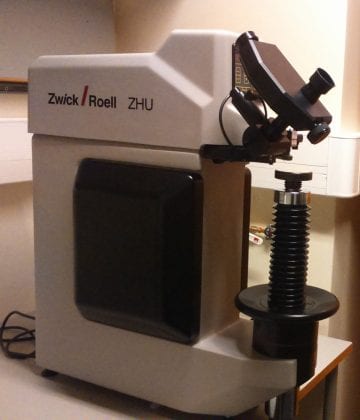 We use Zwick/Roell’s Universal hardness testing machine.
We use Zwick/Roell’s Universal hardness testing machine.
Atomic Force Microscope, AFM
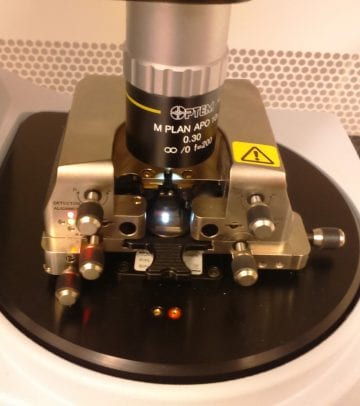 We use Bruker Innova Atomic Force Microscope. Atomic Force Microscope (AFM) measurements reveal the morphology, profile and roughness of different surfaces.
We use Bruker Innova Atomic Force Microscope. Atomic Force Microscope (AFM) measurements reveal the morphology, profile and roughness of different surfaces.
